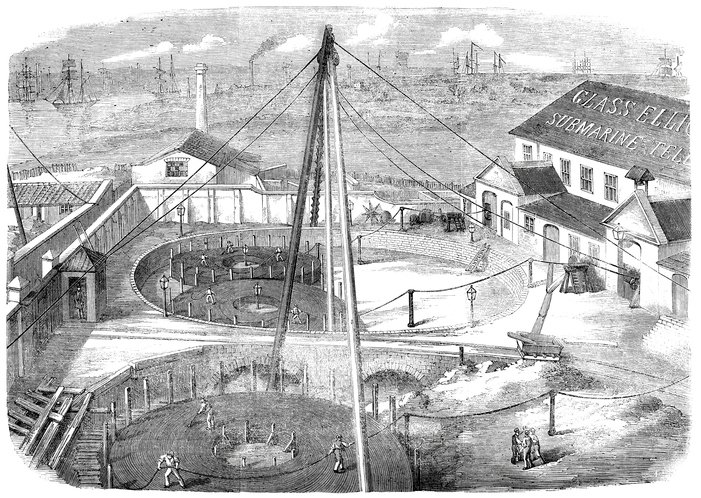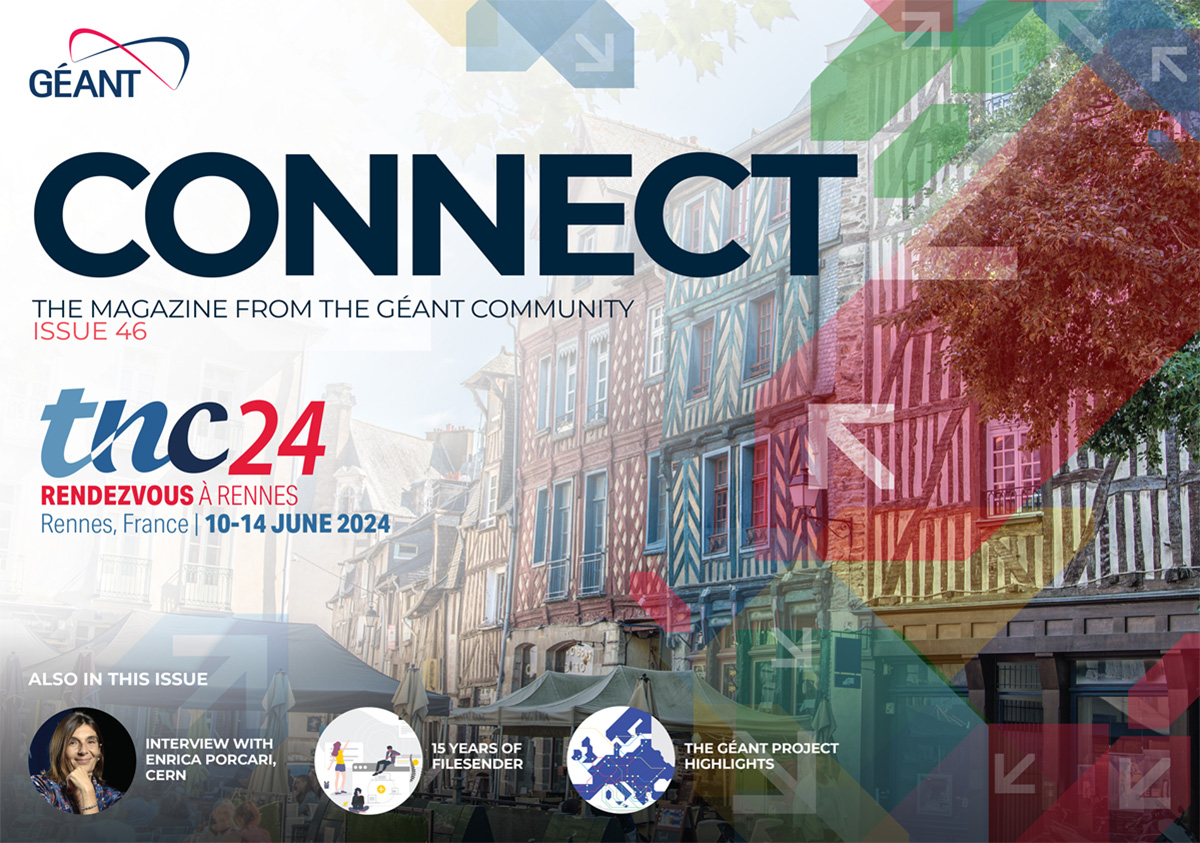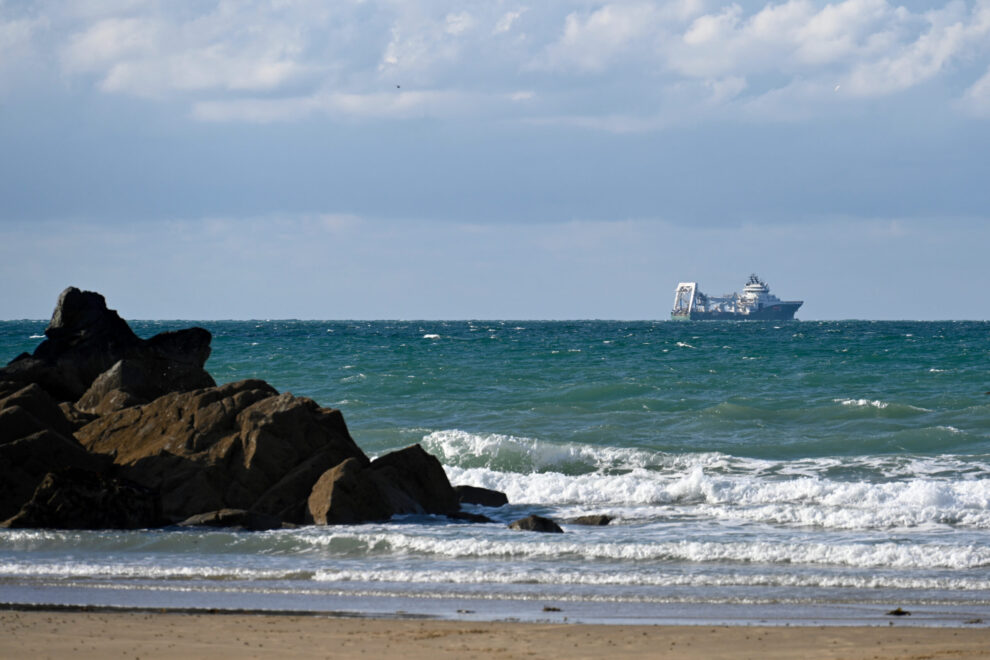The sight of a communication line unspooling from the stern of a large ship, drifting down to settle on a dark seabed that we know little about, surrounded by oceanic expanse, has the potential to conjure up excitement and wonder in most of us. It’s easy to find oneself caught adrift in the romantic worlds of exploration and scientific advancement, as if imagining yourself aboard Verne’s Nautilus or Cousteau’s Calypso. Yet upon closer inspection, the stark reality of submarine cable communications is not one harmonious tide of collaboration between world regions or pondering inventors. It is a surge of competition, transaction, expansionism and fierce industrialisation – spanning as far back as the 1850s. And it’s time for that undercurrent to change.

Since the first (but short-lived) transatlantic telegraph cable was laid in 1858 between Newfoundland and Ireland, a boom of cable infrastructures followed suit. Messages between world regions and continents that had previously taken weeks or months to deliver, now only took seconds. It’s practically impossible to describe how this truly advanced the development of modern society. In many ways, it is still too early to tell. Yet there is one impact that is immediately observable, in an indirect fashion.
Money doesn’t always talk
Whilst traditional telecommunication methods via such cables have facilitated the efficiency of global trade since its inception, the invention of modern internet communication has cemented the backbone of economic globalisation. Around 97 percent of international data traffic is carried through submarine cables. Without such an infrastructure, global trade would grind to a halt. Yet to attain the economic value of the submarine cables themselves is a tricky business. This draws comparisons to our own community – where we understand that it is close to impossible to estimate the monetary value of scientific research and education, whilst all the time knowing that it is through such work that most of human progression lies. Due to this paradox, it is through other lenses that submarine cables are often described or portrayed – be that either by policy makers or the private sector.
Diving deep into data diplomacy
The global scramble for the seabed has truly commenced. Either funded by government programmes or private consortiums, member states and/or transnational corporations are teaming up to lay (and more importantly, own) more submarine cable systems. A variety of actors have different interests in doing this. Take major global powers and how they handle their internet governance, for example. The United States will always prioritise an internet that is commercially friendly. China emphasises an internet which safeguards state sovereignty above all else. And Europe? As the European Commission (EC) wishes to remain consistent throughout its collegial processes, then a human-centered internet, where citizen online rights are protected, will likely be the key driver.
But for whichever perspective you analyse here, it’s important to note that they all require one essential element of effective governance – control. And how that control works at a submarine level can lead to disagreement and confusion. Forget political agreements or memorandums of understanding. If Acceptable Use Policies, Peering Policies, or simply the laws that companies or states act within contradict each other, then national security concerns swiftly arise. And don’t even mention the complexities of collecting and spending the funding correctly.
This is why the EC’s what-used-to-be-termed ‘European Sovereignty’ has now transformed into the more blissfully vague ‘Strategic Autonomy’ policy angle. Europe’s digital aims are now not so much as to work with diversified foreign partners, but more the need to act alone or at least primus inter pares for the sake of our own digital single market. And for that to become a reality, it is working heavily on implementing via the Global Gateway strategy several submarine cable landing points in Europe, along with several pieces of consumer protection legislation, such as the Digital Services Act or NIS2 Directive. In a world that is becoming increasingly unstable and volatile in different areas (this does not require spelling out), the EC seems to follow a safeguarding approach when looking beyond its borders.
Coming up for air
The sole aim of diplomacy should be to ensure the continued constructive relations between states or regions. Science diplomacy, as a tool, is becoming an increasingly important asset of the practice. Submarine cables are critical to supporting multilateralism by showcasing how global communication is essential for international cooperation. They underpin the operations of not just industry, and we must state here too, R&E entities, but also global organisations such as the United Nations and the World Health Organization, which relied on these networks during the COVID-19 pandemic for coordinating a global response. To be even more matter of fact, such cables facilitate real-time negotiations and maintain diplomatic ties at times of extreme hardship during multilateral summits between world leaders.
Economically, submarine cables are vital for managing international trade agreements and transactions to enhance economic interdependence. They also support military alliances like NATO by enabling synchronised defense strategies and operations across countries. Additionally, in times of crises such as natural disasters, these cables are crucial for rapid information transmission, aiding effective international response and aid delivery.
It is indisputable therefore that submarine cables foster an interconnected world where cooperative solutions and collective action are enhanced through robust global communication networks, thus laying the technological groundwork for effective multilateralism. It is important to remember this when arguing the values of such infrastructures from an NREN/REN perspective. As a community, such infrastructures are essential to us, but other actors, including industrial ones, need and rely upon such cables too, in order to bring about economic growth, environmental protection, civilian prosperity, security and diplomatic solutions. As such, any large consortia advocating for submarine cable advancement should be able to speak with a single yet diverse and rich voice. And this is just as well if one looks at future predictions for the sector.
It’s that bandwidth boom – again…
Problems or no problems – one constant remains in this increasingly interconnected world. The demand for more capacity and bandwidth. The global submarine cable systems market is poised for significant expansion, registering a compound annual growth rate of approximately 12.5% over the next few years, and is fueled by an insatiable global demand for connectivity, advancements in telecommunications infrastructure, and burgeoning requirements in energy transmission and data center expansions, including research infrastructures and large scientific facilities. This unbridled data market expansion is also a victim of emerging technological trends, such as the integration of renewable energy sources, the widespread deployment and integration of 5G (soon to be 6G) networks, and the acceleration of digitalisation in telemedicine – look at the Common European Data Space for health, to name but one example of a thematic data area.
By 2030, global internet data traffic is expected to more than triple compared to early 2020 levels, influenced by an increase to over 4.8 billion internet users and nearly 30 billion connected devices. This is a huge number.
This predicted surge underscores the need for a robust and scalable internet infrastructure planned ahead of time, and so it goes without saying that the significant expansion and upgrades of submarine cable systems are pivotal to ensure that we continue the boom and avoid a painful bottleneck – going bust will not even be an option.
Please hold, another caller is on the line
Thus far, the trends described have accounted for regular optical internet data transfer. But other alternative communication methods and innovations can potentially be used on the same submarine cable infrastructure and are knocking on the door. This will only add further to the importance of sustained investment. Take Time & Frequency communications, Quantum Key Distribution (QKD), or even cable sensing technologies.
Cable sensing technologies, such as those used in the SUBMERSE project, capitalise on existing submarine cables to monitor various Earth and oceanic systems, providing real-time data for scientific research and practical applications. These technologies enable the detection and analysis of seismic activities by measuring natural and artificial seismic waves, aiding in the rapid assessment of earthquake impacts and enhancing tsunami early warning systems. They also track continental plate movements, offering insights into tectonic shifts and potential earthquake triggers. In oceanographic contexts, cable sensing facilitates the observation of seabed interactions, benthic flows, and the effects of human activities on marine environments. This broad range of applications not only helps in understanding geological and oceanographic processes but also supports the study of marine mammal behaviors and interactions, providing valuable data for conservation and research efforts in marine biology. It is with pride then that we as the GÉANT Community can now affirm that we facilitate the use of our current submarine infrastructure to perform cutting edge scientific research. This is beneficial to our members, end-users, research infrastructures, and the EC.
Another form of alternative communications is Time and Frequency (T&F) Networking. This involves distributing accurate time and frequency references across various systems and networks. The technology is essential for applications and services where precise synchronisation must be exact, so for example in telecommunications, finance, broadcasting, and scientific research. It underpins the reliability and efficiency of modern digital networks and systems, providing the synchronisation backbone necessary for many of today’s technologies. Our T&F investment is by no surprise also set to increase in the future, combined with our collaboration with respective National Meteorological Institutes.
Finally, QKD is a cutting-edge method for secure communication that utilises principles of quantum mechanics to generate and share a cryptographic key between two parties. It allows for the secure distribution of cryptographic keys with the assurance that any suspicious eavesdropping attempt will be detected. While QKD does not encrypt or send the actual messages, it provides the secure key needed for encryption in a separate classical channel, ensuring confidential communication. This technology is seen as potentially revolutionising secure communication in the face of growing computational power and the future threat of quantum computing to conventional encryption methods.
So why are submarine cables more important than ever?
Global cooperation in the field of submarine cables is an essential element of both internet governance and diplomacy. Research & Educational activity is fueling demands to support investments in submarine systems – in remote areas as well along more traditional routes. The changing profile of the ownership/utilisation of the internet is noted and the public interest role of R&E can be seen to be significant enough to act as a conduit to ensure a retention of an open, resilient and distributed internet structure.
Submarine cable agreements between National and Regional Research Education Networks (NRENs/RENs), based on the common values of trust and reciprocity, allow public entities to not just share and disseminate public research and educational data, but innovate solutions and services to bolster scientific advancement – that the world sorely needs. Submarine cables are foundational to the fabric of global communication and economic interdependence, serving as the backbone of the world’s data traffic. This extensive network is crucial for scientific, educational, economic, and diplomatic purposes. They are needed to foster geopolitical stability by enhancing the interconnectivity between nations and economies, making conflicts less desirable due to the intertwined economic consequences that would follow. To learn more about this subject, watch the recordings of the TNC24 session ‘United or divided: How will our community be working together by 2040?’, where we covered this subject in more detail.
Submarine cables extend beyond mere data transmission; they are pivotal in promoting transparency and the free flow of information. This openness is crucial for building trust and understanding between nations, reducing the likelihood of conflicts arising from misunderstandings or misinformation. Additionally, the resilience provided by submarine cables during crises ensures that communications can continue even when other infrastructures fail, supporting effective crisis management and rapid response efforts.
As the digital transformation accelerates, the proactive measures of NRENs and RENs in owning or leasing submarine cables are essential for sustaining global research and educational collaborations in an increasingly connected world.
Dedicated, centralised funding to improve these networks to be allocated, be that by the EC, United Nations, or World Bank, would aid global stability and quicken our ability to conduct the research we so urgently need in order protect our planet and peoples. With such a premise, and subsequent opportunity, it is an urgency impossible to ignore.

Read or download the full magazine here







